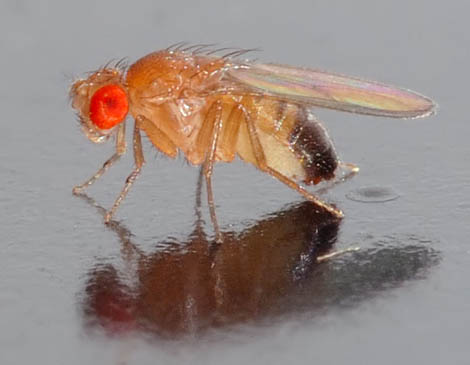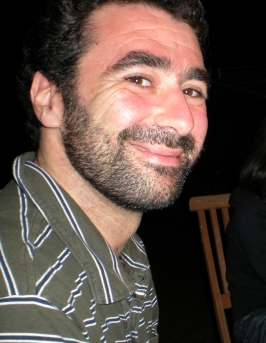 The researcher Alexandre Raposo was born in Santarém, grew up and studied in Ferreira do Alentejo, got a doctorate at the University of Cambridge (UK), and has just published an article in the prestigious journal Science, an important contribution to understanding the development of the fruit fly.
The researcher Alexandre Raposo was born in Santarém, grew up and studied in Ferreira do Alentejo, got a doctorate at the University of Cambridge (UK), and has just published an article in the prestigious journal Science, an important contribution to understanding the development of the fruit fly.
Correct positioning of the cell nucleus is important in many biological processes, to the point that some neurological diseases are characterized by defects in the movement of the nucleus. Also in the female gamete of the fruit fly – the oocyte – so it is.
Even before fertilization, it is the displacement of the nucleus from the posterior end to the anterior zone of the oocyte that determines the dorsoventral axis (back-belly) of the future embryo of the fly. Without correctly established axes, embryo development does not proceed normally.
In a study now published in the journal “Science”, a team of researchers from the University of Cambridge (UK), including the Portuguese Alexandre Raposo, currently a researcher at the Gulbenkian Science Institute, eloquently show that the oocyte nucleus of the fruit fly it is pushed, not pulled, as was thought up until now.
Pushing the nucleus are protein fibers – the microtubules – which organize and clump 'behind' the nucleus, grow and as they grow push the nucleus towards the opposite (anterior) end of the oocyte. This movement creates a fundamental asymmetry, helping to establish the axes along which the future embryo will develop.
It was thought that the anteroposterior (head-tail) axis would be established first, followed by translocation of the oocyte nucleus, but this study shows that after all, the nucleus translocation precedes the creation of this axis, and appears to be independent of their training. All these results elucidate crucial steps in the early stages of embryonic development.
The researchers reached these conclusions by following, in real time, the movement of the fruit fly oocyte nucleus at about 4 microns/hour. They were able to detect a small concavity in the nucleus, near the posterior pole of the oocyte, where the microtubules touch as they grow.
The researchers also showed that, contrary to previously thought, this core translocation process is not affected by mutations that in humans cause serious defects such as microcephaly.
There are possibly other genes that affect this process, which could be relevant to embryonic development in humans as well.
Remember that the fruit fly (Drosophila melanogaster) is a useful, robust animal model that has been widely used in genetic studies for over a hundred years. A better understanding of the mechanisms and genes involved in the different stages of embryonic development can help identify new targets for the development of new therapeutic strategies for genetic diseases that are also common to humans.
Alexandre Raposo was born in Santarém, in 1970. He graduated in Technological Physics Engineering at Instituto Superior Técnico and, after a few years working in industry, joined the Gulbenkian Doctoral Program in Biomedicine. He did his doctorate in the laboratory of Prof. Daniel St. Johnston at the Gurdon Institute at Cambridge University (UK). After a period as a researcher at the University of Medicine of Vienna (Austria), he returned to Portugal and to the Gulbenkian Institute of Science, where he is currently working in the context of the differentiation of neurons in mammals.
Authors: António Piedade with Ana Godinho
Science in the Regional Press – Ciência Viva
Article reference:
Growing Microtubules Push the Oocyte Nucleus to Polarize the Drosophila Dorsal-Ventral Axis, Tongtong Zhao, Owen S. Graham, Alexandre Raposo, and Daniel St. Johnston.
Science, published online, 12 April 2012, [DOI:10.1126/science.1219147]



















Comments